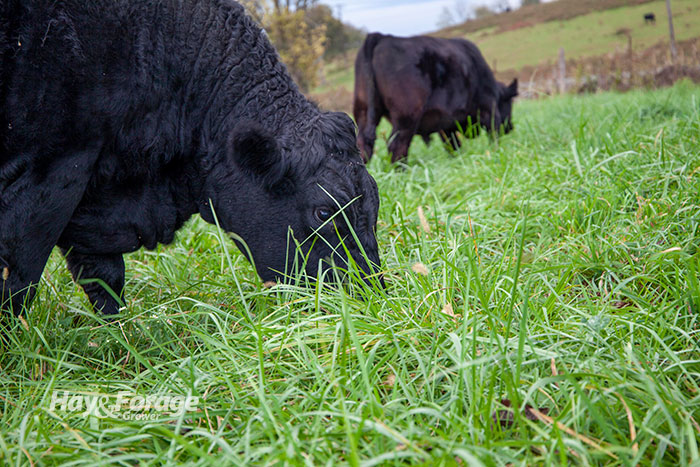Stockpiled forage may not need nitrogen |
| By Amber Friedrichsen, Associate Editor |
|
|
 Determining the best way to stockpile forage for winter feeding is a farm-by-farm, and sometimes a field-by-field, decision. It’s no secret what this tactic is, but knowing when to start stockpiling and how to produce the highest yields are two questions that don’t have definitive answers. The earlier stockpiling is initiated, the more forage a field will have to offer, but it will likely be lower in quality. With that said, the sooner cattle start grazing stockpiled forage, the higher forage quality will be, but there will be less to graze. Chris Penrose with Ohio State University Extension says adding nitrogen can boost yields and safeguard stockpiling success; however, the current rise in fertilizer prices makes doing so less cost-effective. What’s more is the university’s standard application recommendation of 100 pounds of urea per acre to gain 1,000 pounds of additional forage per acre has not been shown to hold true. “During our three-year, three-site study, yields increased only 500 to 900 pounds per acre with the addition of 46 pounds of nitrogen or 100 pounds of urea,” the extension educator reports. “That makes the cost of an additional pound of stockpiled grass 5.5 to 10 cents per pound.” Instead of relying on nitrogen, Penrose suggests producers refine their management practices to achieve the best results. He shares what he has done on his own farm to put up the most stockpiled forage possible each season. Plan ahead “For me, the planning starts in May with first-cutting hay,” Penrose explains. “If I have plenty, I may graze some hayfields, then start to stockpile in August. If hay is short, I will leave more fields to make a second and even third cutting, then start stockpiling.” This year, Penrose says his first cut of hay resulted in a generous yield, and he didn’t harvest as much from his second cutting. Therefore, he stockpiled a greater number of acres and did not have to apply nitrogen to achieve the amount of forage needed. He even anticipates having excess hay to store and sell. In contrast, adding nitrogen to stockpiled fields may be necessary when winter feed supplies are predicted to be lacking to promote forage production in the fall. Additionally, utilizing alternative feed sources can maximize winter feed supplies as well. “Last year, it made sense to feed a part of the diet with shelled corn and limit feed hay,” Penrose says. “That worked very well when feed was short.” In summary, the answers to when and how to stockpile forage vary from year-to-year. Penrose ultimately recommends analyzing forage production and assessing winter feed supplies before applying fertilizer to a field. “I saw good yields this year just setting fields aside and letting them grow without adding nitrogen,” Penrose concludes. “There are still reasons to add nitrogen, but before doing so, consider all the factors and the costs for the added yield.”  Amber Friedrichsen Amber Friedrichsen served as the 2021 Hay & Forage Grower editorial intern. She currently attends Iowa State University where she is majoring in agriculture and life sciences education-communications and agronomy. Friedrichsen grew up on her family’s diversified crop and livestock farm near Clinton, Iowa. |
